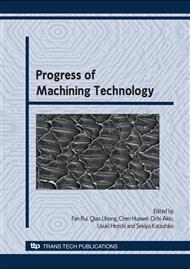p.649
p.654
p.658
p.662
p.667
p.672
p.676
p.680
p.684
Effect of Electrode Insulation Thickness on Size Accuracy of Bored Hole in ECD Process
Abstract:
. Electrochemical drilling (ECD) is a versatile process for drilling meso/micro size holes in hard-to-machine metals. Electrode insulation plays a significant part in improving ECD localization and accuracy. Electric field simulation of the side gap shows the current distribution varies remarkably with the size of insulation layer shape. Experiments are carried out to study the influence of insulation thickness (IT) on the machined hole characteristics. Poor hole was observed and identified as most likely to occur with a combination of low tool feed rate and low IT. Electrodes with the relatively thick insulating layer leads to a significant improvement in bored hole precision.
Info:
Periodical:
Pages:
667-671
Citation:
Online since:
February 2009
Authors:
Price:
Сopyright:
© 2009 Trans Tech Publications Ltd. All Rights Reserved
Share:
Citation:


